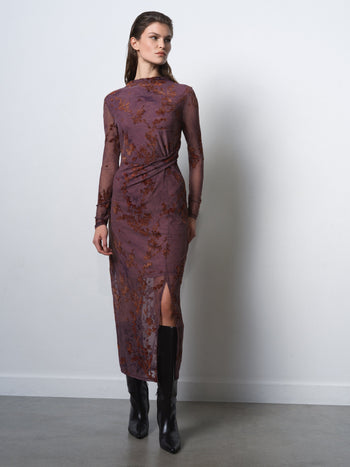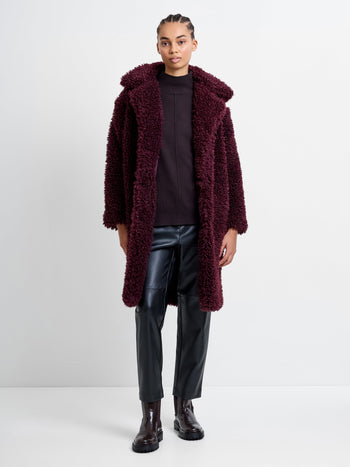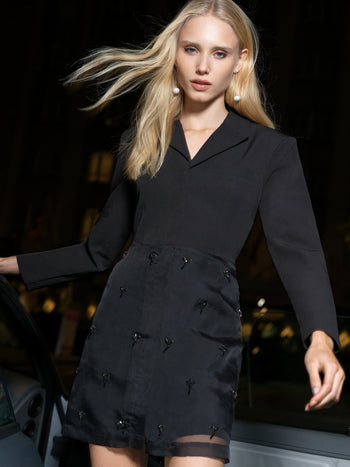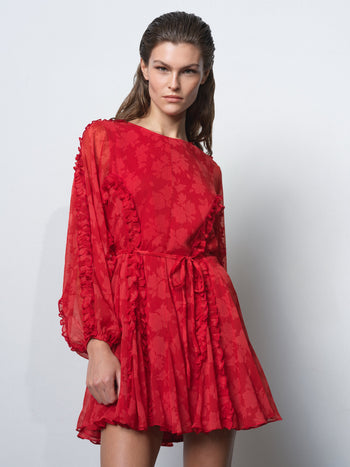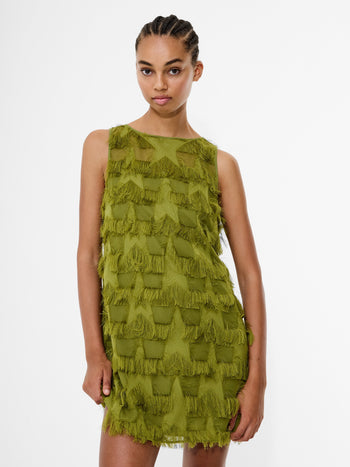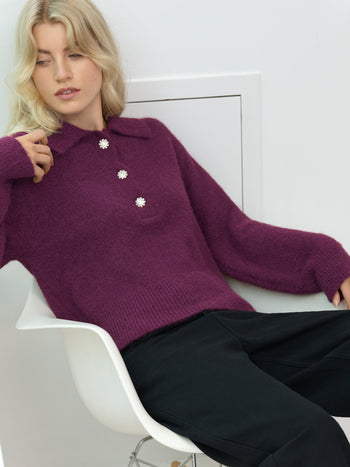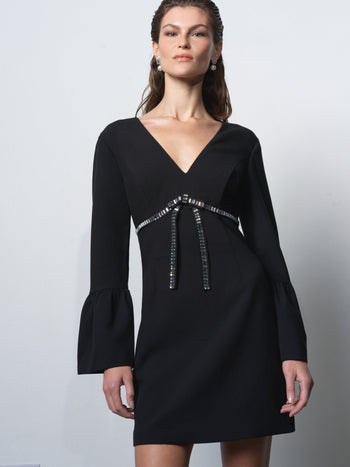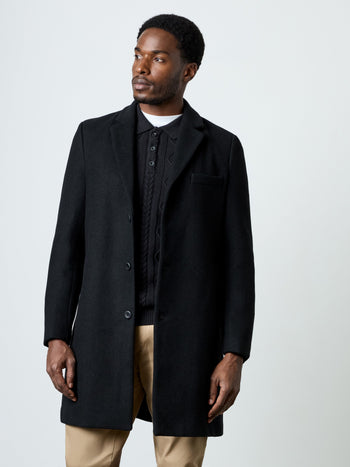Choosing your new sofa is no easy feat - it's a real investment that's going to be with you for many years. To really get to the crux of what you need to consider when looking for your new sofa, we caught up with the team at DFS.
Aside from their exclusive range of French Connection sofas, they've made choosing and buying your new sofa a breeze.
Prepare for compliments.
What are your three top tips when it comes to choosing a new sofa?
Tip one: Think comfort.
This is the most important thing to consider when buying a sofa. How do you like to lounge and what kind of ‘sit’ do you prefer? If there are two of you and you both like to sit with your legs up, check that the sofa is deep enough to accommodate you both, or perhaps opt for a chaise end sofa or a recliner. If you like to lie down, ensure that the sofa is long enough for you to stretch out! Taller customers may also find that a sofa with a higher back offers them a little extra neck support.
Tip two: Think style.
The chances are you’ll be living with this sofa for years. It’s not a piece of furniture that you’ll be changing with each season’s trends so it’s important to consider the longevity of it. This doesn’t mean you have to be conservative or ‘safe’. If you really love a bold, statement piece then go for it - choose a vibrant colour or bold patterned sofa as the focal point for your room, then keep the rest of the room relatively pared back. If you’re not that confident you can always introduce bold colour or pattern on an accent chair or footstool. The alternative is to buy a classic, neutral sofa and accessorise with trend pieces that can be replaced more often.
Tip three: Think size.
Many people think about the basic measurements of the sofa and whether you can physically get it into the room, but people often forget to consider whether the size and scale of the sofa is right for the space, and in comparison to their other pieces of furniture. One tip for getting this right is to cut out the shape of the base of your sofa from newspaper and then place it in the room. This will allow you to check that you have made allowances for doors, windows and radiators, and that you have enough space to walk around the sofa with ease.

How do you choose the best fabric? How do you know what is right?
In terms of fabric, think about how your sofa will be used and who is using it with you e.g. young children or pets. If the sofa is going to be the prime everyday seating in a main room such as a living room, then you might like to consider a hard wearing, man-made fabric with additional stain protection treatment, or a good quality leather, for durability. If the sofa is going in a secondary room such as a conservatory, spare room or office, then you can afford to be a little more adventurous in your choice of fabric, as the sofa will be subject to much less wear and tear.
What should you base your colour selection on?
Colour and style are so subjective so get to understand what you like. Do you like colour harmony where similar tones live side by side peacefully? Do you like it when colours clash and surprise you?
Some people look at the colours they wear, as these are colours that you naturally gravitate towards so the chances are you love them – and if you love them, you can live with them.
Alternatively, do you have a favourite piece of artwork or another much loved piece of furniture? If so, you can create a colour palette that complements this and use it as the starting point for your theme.
If you’re in rented accommodation and can’t decorate the walls or floors - plus you think you may move in a few years - it’s worth considering a neutral colour as it’s more transferable to a new interior. This may be a compromise but you can always create colour interest with accessories.

How do I decide between colourful and neutral? How do I know what is a trend-led piece and what has longevity?
Do you know what your style is? If not, educate yourself and get inspired. Pinterest, interior magazines and Instagram are all great places to see what others have done before you and help you curate the look you want.
Before deciding on the colour or shape of your sofa, look at the room its going into. Are the walls bold or neutral? What colour flooring do you have? What other furniture pieces do you have that the sofa has to blend in with? Start to create a colour palette based on all of these things first, then check what the trends are and how you can update the look with new shapes or colours to keep the room current.
Luckily, colour trends seem to have more longevity than patterns or motifs. At DFS more than 50% of the sofas we sell are grey and we don’t see this decreasing either. This is very much driven by the influence of Scandi interiors which has really stood the test of time. As in fashion, neutral colour trends tend to have more longevity that brighter or bolder colours that come and go a bit more frequently.
How important is trying before buying? Why is it important to go into store and try sofas, rather than just buying online?
We highly recommend that customers go into store to see and sit on their sofa before making a purchase. Comfort is very subjective and a sofa is a significant purchase, so it’s important to make sure the sofa meets your comfort needs. There are a range of cushion filling options to suit different preferences, from very soft, cocooning seats and backs using fibre and in some cases feather fillings, through to firmer, more supportive, durable foam fillings for a more formal sit.

How do I know what style of sofa is right for me?
The most important thing to consider is comfort and maintenance. Go shopping and try as many styles (relaxed and formal) and cushion fillings as possible. Don’t be embarrassed about lying on the sofas in store, or kicking off your shoes and curling up on them – sit on them as you would at home.
Ask about the maintenance of the sofa you’re interested in. You need to understand the performance of the fabric / cover and the ‘sit’ of the interior filling. For example, fibre and feather fillings provide a softer sit but need daily plumping to keep them looking good. Foam doesn’t require much maintenance but provides a firmer sit. Leather is likely to stretch, crease and mark with use, very much like a pair of leather shoes, which is a normal characteristic but the ‘lived in’ look is not to everyone’s taste if you like a very ‘precise’ look.
What should I consider when deciding on the size of my new sofa?
Think about how you use the room – how many people you’re likely to need everyday seating for, and whether you want to purchase additional pieces to accommodate extra guests.
Remember to consider doors, windows and radiators too, as well as the overall size of the room. Be aware of the depth of the sofa if you’re buying for a small room – the length may be smaller but the depth of the seat rarely changes from a large to small sofa.
What is the typical lifespan of a typical sofa? How should that affect my decision?
If well looked after - for example, through plumping cushions regularly and brushing or hoovering fabrics requiring higher maintenance – a product should last for many years. At DFS we offer a 15-year guarantee on frames and frame springs for all of our sofas, together with and two-year guarantee on stitching and mechanical parts used on recliners. The average customer replaces their sofa every seven years or so, but this is largely due to changing trends and interior styles, rather than the wear of the product.
Anything else that we should consider when buying a new sofa?
Think about what you’re going to do with your old sofa, so that you can clear and ready the room for when your new sofa arrives. At DFS, customers purchasing a new sofa can opt for their old sofa to be taken away for free by the British Heart Foundation, to be sold in one of their homewares stores across the UK, with all proceeds from the sale of these sofas going to the charity.
Just before your sofa arrives, make sure you’ve cleared the room of any clutter and that there is clear access from the front door to where your sofa will sit, to allow for easy delivery.
Feeling inspired? Shop our FC x DFS sofa collection.
Don't forget the accessories!



